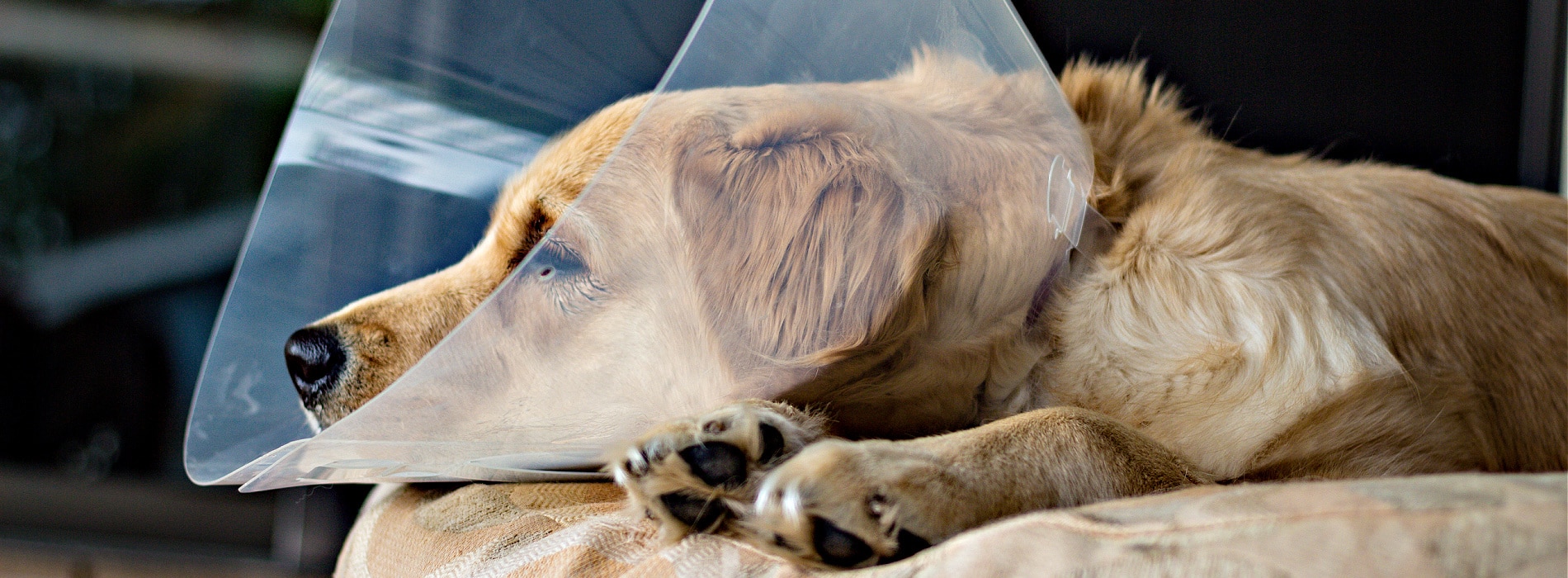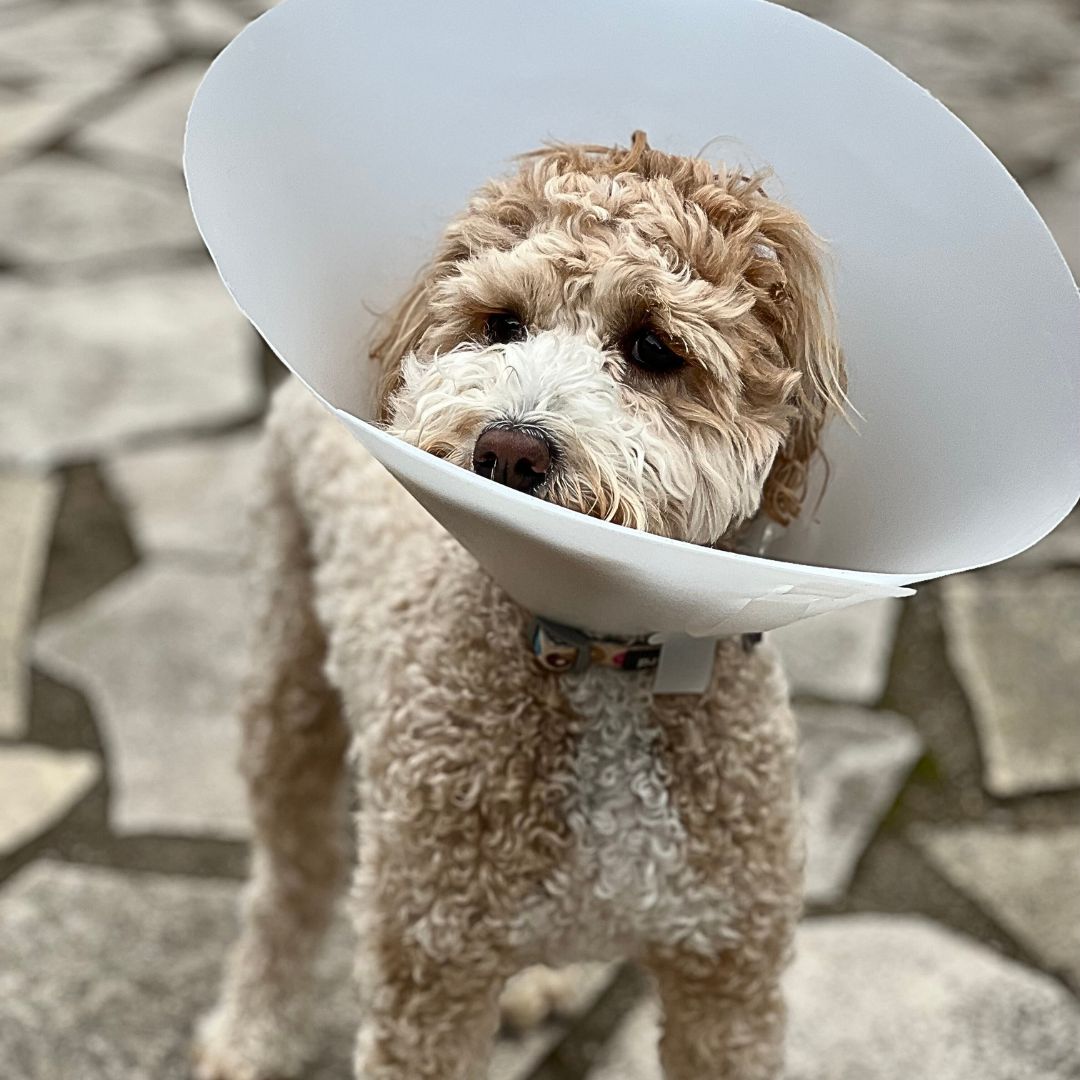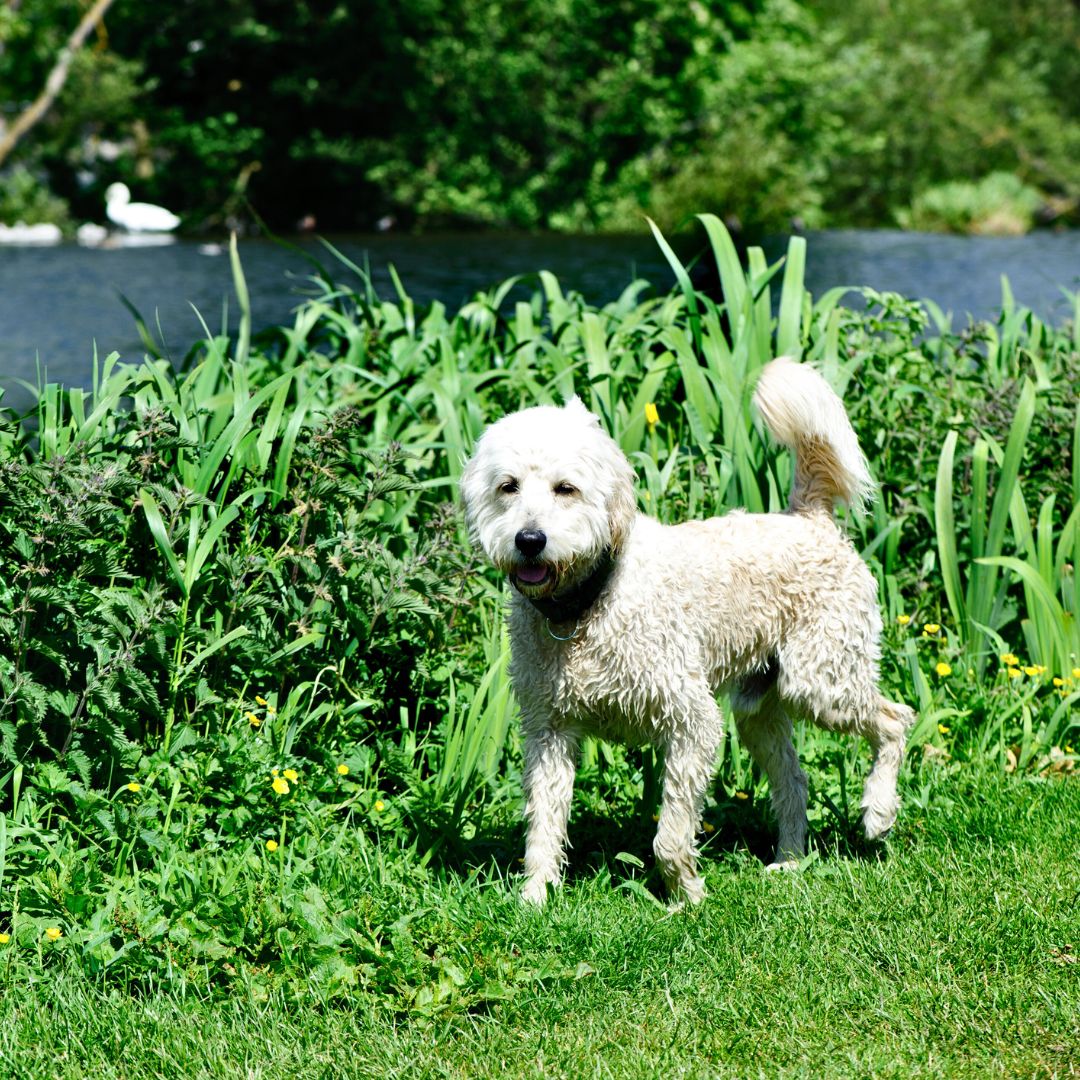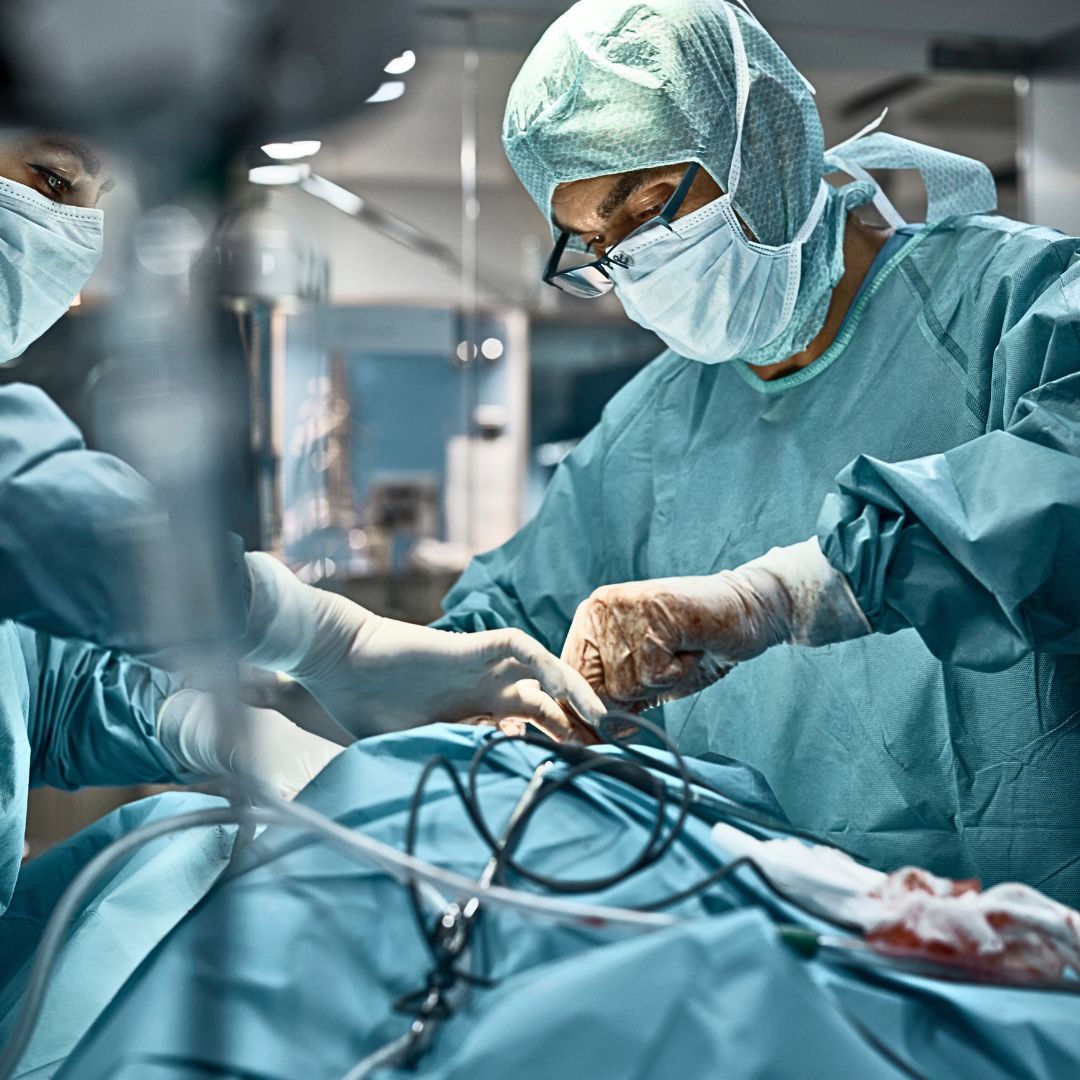The appropriate time to spay or neuter your Labradoodle is a topic that should be discussed with your veterinarian. They can provide guidance based on your pet’s specific health and developmental needs.
It is important to benefit both your pet and the community. Let’s explore why this procedure is highly recommended and the positive impact it can have.
Firstly
Every year, countless puppies and dogs end up in shelters or on the streets because there aren’t enough homes for them. By having your Labradoodle spayed or neutered, you are actively contributing to reducing the number of unwanted pets.
Additionally
For Female Labradoodles, it eliminates the risk of uterine infections and reduces the chances of developing mammary tumours. The procedure will help male Labradoodles to help prevent testicular cancer and reduce the risk of prostate problems. According to MSPCA, Neutering involves removing a male pet’s testicles and prostate, which are responsible for sperm production and urination. These procedures also eliminate the desire for your Labradoodle to roam searching for a mate, which can lead to accidents or injuries.
Behaviorally
Unaltered dogs often display aggressive behaviours, such as territorial marking or excessive barking. However, having your Labradoodle spayed or neutered will improve its overall temperament, making it easier to train and socialize.
It is important to note that your veterinarian recommends completing this procedure for your Labradoodle at the appropriate age. The procedure is typically performed when your puppy is around 6 to 12 months old, but it’s best to consult your vet for professional advice.
At What Age Should You Consider Fixing Your Labradoodle Puppy?
It is generally recommended that you consult your veterinarian for personalized advice. However, the ideal age for the procedure for Labradoodles is typically between six and nine months old. This time frame allows the puppy to fully develop while reducing the risk of health issues, such as certain types of cancer and behavioural problems.
For Male Labradoodles, neutering can be done around six to nine months of age, although some veterinarians may recommend waiting until they are closer to nine months. It can help prevent unwanted behaviours such as marking territory and aggression towards other animals.
Spaying is also usually recommended for female Labradoodles around six to nine months of age. It can help prevent reproductive health issues like pyometra (infection of the uterus) and mammary gland tumours.
Remember, every Labradoodle is unique, so it’s crucial to discuss the timing with your veterinarian based on your puppy’s needs and health status.
The Benefits of Early Spaying/Neutering for Labradoodles
Performing this procedure on your Labradoodle at an early age can provide numerous benefits for both their health and behaviour. Let’s delve into the advantages of early spaying/neutering and how it can positively impact your furry friend.
One of the primary benefits of early spaying/neutering is preventing certain health conditions. For female Labradoodles, spaying before their first heat cycle significantly reduces the risk of mammary tumours and uterine infections, which can be life-threatening. Neutering male Labradoodles at a young age helps prevent testicular cancer and decreases the chances of prostate problems later in life.
Temperament & Behaviour
Additionally, early spaying/neutering can contribute to a more well-balanced temperament. Unneutered male dogs often display aggressive or territorial behaviour, while unspayed females can experience mood swings during heat cycles. Removing the reproductive organs minimizes these hormonal fluctuations, resulting in a calmer and more predictable demeanour for your Labradoodle.
Behavioural issues can be crucial in prevention. Male Labradoodles who are neutered early are less likely to exhibit certain undesirable behaviours, such as marking territory with urine or engaging in excessive mounting. Female Labradoodles spayed before their first heat cycle are less prone to escaping or attracting unwanted attention from intact males during their fertile periods.
It is important to note that while there are numerous advantages to early intervention, it is always wise to consult a veterinarian to determine the best timing for your Labradoodle. Every dog is unique, and their needs should be considered.
The Risks and Considerations of Early Spaying/Neutering for Labradoodles
It’s important to know the potential risks and considerations. While spaying/neutering is a common practice that offers several benefits, it’s crucial to evaluate the specific circumstances and make an informed decision.
One of the main concerns regarding early spaying/neutering in Labradoodles is the potential impact on their long-term health. Studies indicate that spaying or neutering pets at a young age may lead to higher chances of certain health problems, including joint issues, specific cancers, and urinary incontinence. These risks are more pronounced in larger dog breeds like Labradoodles.
To mitigate these risks, alternative options to consider include delaying the procedure until the dog reaches sexual maturity, which is typically between 6 to 12 months for Labradoodles. It allows the dog’s body to develop before fully undergoing surgery, potentially reducing the risk of certain health problems later in life.
Another option is a partial spay/neuter procedure called gonad-sparing surgery. This technique removes only the reproductive organs while preserving the hormone-producing tissues. Gonad-sparing surgery minimizes potential health issues while preventing unwanted pregnancies by maintaining hormonal balance.
It’s important to note that every dog is unique, and consulting with a trusted veterinarian is essential when making decisions about early spaying/neutering. It can provide personalized advice based on your Labradoodle’s health history, breed characteristics, and lifestyle factors. It ultimately weighs the potential risks and considers alternative options to make an informed decision about early spaying/neutering for your Labradoodle’s overall well-being.
Spaying/Neutering Labradoodle Puppies
Q: At what age should I spay/neuter my Labradoodle puppy?
A: Spaying or neutering your Labradoodle puppy between six and nine months is generally recommended. However, it’s best to consult your veterinarian to determine the optimal time for your puppy.
Q: Why should I spay/neuter my Labradoodle puppy?
A: Spaying or neutering your Labradoodle puppy offers several benefits. It helps prevent unwanted litter, reducing the risk of health issues such as reproductive cancers, and can also help with behavioural problems such as aggression and roaming tendencies.
Q: Will spaying/neutering my Labradoodle change their personality?
A: While spaying or neutering may cause subtle behavioural changes, such as reduced aggression or roaming instincts, it will not drastically alter your Labradoodle’s personality. They will still be the same loving and playful companions you know and adore.
Q: Is spaying/neutering a painful procedure for my Labradoodle?
A: The spaying/neutering procedure is performed under anesthesia, ensuring that your Labradoodle feels no pain during the surgery. Afterward, they may experience discomfort, but your veterinarian will provide proper pain management medication to alleviate any discomfort.
Q: Are there any risks associated with spaying/neutering Labradoodle puppies?
A: Like any surgical procedure, there are inherent risks involved. However, the benefits of spaying or neutering usually outweigh the potential risks. Your veterinarian will discuss these risks with you and take appropriate measures to minimize them.
Q: Can I breed my Labradoodle before spaying/neutering them?
A: If you plan to breed your Labradoodle, it is generally recommended that you do so before considering spaying or neutering. Breeding should be done responsibly and under the guidance of a reputable breeder or veterinarian.
Q: How long does it take for my Labradoodle to recover after being spayed/neutered?
A: Recovery time will depend on the individual Labradoodle and the procedure performed. Generally, the incision takes about 10 to 14 days to heal. During this time, you must restrict your puppy’s physical activity and monitor its incision site to prevent complications.
Q: Do I follow special postoperative care instructions after my Labradoodle is sent home?
Absolutely! After your Labradoodle is sent home following surgery, it is important to provide specialized postoperative care to ensure their comfort and a smooth recovery.
Here are some guidelines to follow:
1. Follow the veterinarian’s instructions
Your vet will provide specific postoperative care instructions tailored to Labradoodle’s needs. Carefully read and understand these instructions; don’t hesitate to ask questions.
2. Monitor your Labradoodle
Keep a close eye on your furry friend during recovery. Observe their behaviour, appetite, and overall well-being. If you observe any negative behaviour or symptoms in your pet, contact your veterinarian immediately.
3. Provide a quiet and comfortable space
Create a calm and cozy area where your Labradoodle can rest undisturbed. Ensure they have a soft bed or blanket, away from drafts or excessive noise.
4. Limit physical activity
Restrict your Labradoodle’s physical activity as the vet advises. It may include avoiding strenuous exercise, jumping, or rough play. Gradually reintroduce normal activities over time as directed by the veterinarian.
5. Administer medication as prescribed
If your Labradoodle has been prescribed medication, follow the dosage instructions carefully. Ensure they receive their medication on time and complete the course as directed.
6. Keep the surgical site clean and dry
If instructed by your vet, gently clean the site as per their guidelines using mild solutions or disinfectants recommended by the veterinarian. Avoid bathing or getting the incision area wet unless your vet advises.
7. Prevent licking or chewing
Dogs may lick or chew at their incision site out of discomfort or curiosity, which can impede healing or cause infection. Consider using an Elizabethan collar (cone) or alternative protective devices recommended by your vet to prevent this behaviour.
8. Maintain proper nutrition
Provide a balanced diet and fresh water for your Labradoodle, following any dietary restrictions or recommendations the vet gives. A healthy diet will aid in the healing process.
9. Attend appointments
Make sure to attend scheduled follow-up appointments with your vet. These visits are crucial for monitoring your Labradoodle’s progress and ensuring they heal properly.
Remember, each Labradoodle’s recovery will vary, so it’s important to consult your veterinarian for advice and guidance throughout the postoperative period. By providing attentive care and foll
Will spaying/neutering affect my labradoodle’s behaviour?
Yes, spaying or neutering your labradoodle can impact their behaviour. In most cases, it has a positive effect. Spaying (for females) and neutering (for males) can help reduce unwanted behaviours such as roaming, aggression, and marking territory. It can also decrease the likelihood of certain health issues, including certain types of cancer.
Spaying or neutering can help your labradoodle become more focused, calm, and easier to train by eliminating the sexual drive and hormones associated with reproduction. However, it is important to note that individual dogs’ behaviour may vary, and other factors, such as genetics and training methods, can also influence their overall behaviour.
It is always recommended to discuss the timing and benefits of spaying/neutering with your veterinarian. They can provide personalized advice based on your labradoodle’s age, health, and specific needs.
Conclusion: Making an Informed Decision for Your Labradoodle’s Spaying/Neutering
In conclusion, making an informed decision about spaying or neutering your Labradoodle is crucial for their overall health and well-being. While there are different opinions and considerations, it is important to consult with your veterinarian and gather all the necessary information before making a final decision.
Spaying or neutering can have numerous benefits for your Labradoodle. It can prevent health issues, such as uterine infections and certain cancers. Additionally, it can reduce unwanted behaviours, such as roaming, aggression, and marking territory. You also reduce the number of homeless animals by eliminating the risk of unplanned litter.
It’s essential to consider the potential downsides when deciding whether to spay or neuter your Labradoodle. This procedure can impact their hormone levels, affecting their growth and development. Discussing these possible effects with your veterinarian is vital to making an informed decision that meets your dog’s needs.
When spaying or neutering your Labradoodle, it’s important to consider their age, health, temperament, and lifestyle. Your veterinarian can guide you based on these factors to help you make the best decision for your furry friend.
Remember, the goal is to ensure your furry friend’s long-term health and happiness. By gathering all the necessary information and consulting with professionals, you can make a well-informed decision that is best for your Labradoodle’s overall well-being.








